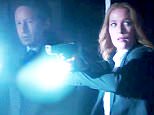How a cancer drug could save your eyesight
by ROGER DOBSON, Daily Mail
British eye surgeons have found a way to prevent hundreds of people from losing their sight.
They have developed a combination of drugs normally used to treat cancer and heart disease to use on patients suffering complications after surgery on a detached retina.
And they have also found a way of predicting the problem before it starts. Detached retinas affect 6,000 people in Britain each year, and tens of thousands worldwide.
Although the condition is sometimes caused by a fall or a blow, in most cases it happens with no warning. Sufferers have included Margaret Thatcher and author John Mortimer.
'It is a very serious sight-threatening condition with a sudden loss of vision in part or all of the eye,' says consultant eye surgeon Bill Aylward, who worked with colleagues at Moorfields Eye Hospital, and the Institute of Ophthalmology in London, and the Royal Liverpool University Hospital to discover the treatment. 'It can happen very rapidly and with no warning.'
The retina works like the film in a camera. When the eye 'sees', an image is reflected onto its surface, and electrical signals are fired off to the brain to give vision.
The retina is attached to cells behind it but in cases of detached retina, it breaks loose and collapses like a deflated hot air balloon.
The result is that the retina loses contact with the cells which it depends on to work and to survive. When it becomes detached, it can no longer receive images and nor can it send signals to the brain. The result is blindness.
Since 1920, the treatment for detached retina has been surgery, but around one in ten patients gets severe scarring.
'Scarring is the body's healing response. When you cut your hand, you want a nice scar that contracts and pulls the skin over the defect,' says Mr Aylward.
'The problem is that, in the retina, scar tissue as a result of surgery contracts and pulls the retina back off. It is a bit of a design fault.
'People have to have more and more operations, which may not succeed, and their vision gets much, much worse.
'Everybody has been concentrating on finding a way of treating this condition once the patient has it. What we have been able to do is to prevent it, and this is the first time anyone has managed to do that.'
Scar tissue is made when cells divide and multiply to cover the damaged area. The Moorfields team set out to prevent that from happening, and turned to drugs used by cancer specialists which are used to stop tumour cells from multiplying.
The team came up with a cocktail of the anti- cancer drug fluorouracil, mixed with heparin. The first drug stops cells producing scar tissue, and the second stops clotting.
To prevent the scar tissue from forming, the surgeons added this cocktail of drugs to a salt solution that flows through the eye while surgery is taking place.
In trials involving around 170 people, the incidence of postoperative scar tissue problems was cut by more than 50 pc. Another trial is expected to show even greater improvements.
'This treatment will mean that some people will not lose their sight, and for others it will mean their vision is far better than it would have been,' says Mr Aylward.
Joan Ramsey, 59, from Surrey, is one of a handful of people who have benefited from the pioneering therapy. 'I had been suffering with flashing lights for some time. I thought nothing of it, that it was just one of those things and that it would soon go away,' she says.
'Then a black, curved shape started going across my left eye and it got worse and worse. I had no idea what it was, and didn't know anything about detached retinas. I thought you had to be a boxer to suffer from that.
'I went to hospital and they treated me as an emergency and performed surgery straight away using this new drug.
'My surgeon says the results are wonderful. My vision is great, and I have no problems. I am absolutely delighted with the results.'
The surgeons have also developed a test for identifying people most at risk of getting post-operative problems.
By using a formula based on a range of ten indicators - including the number of previous operations on the retina, the size of the tear and the scale of the detachment - doctors can predict who is at risk and take action.
-
 Does William reveal what Prince George calls the Queen?
Does William reveal what Prince George calls the Queen?
-
 Police Officer on moment he gave Declan his parking ticket
Police Officer on moment he gave Declan his parking ticket
-
 Grizzly bears caught fighting at Minnesota Zoo exhibit
Grizzly bears caught fighting at Minnesota Zoo exhibit
-
 Video captures Florida State QB punching woman in bar
Video captures Florida State QB punching woman in bar
-
 Meet Bob the golden retriever: The world's friendliest dog
Meet Bob the golden retriever: The world's friendliest dog
-
 Whoopi Goldberg makes quaaludes joke on The View
Whoopi Goldberg makes quaaludes joke on The View
-
 Whoopi Goldberg loses cool with Bill Cosby accusers on The...
Whoopi Goldberg loses cool with Bill Cosby accusers on The...
-
 New video emerges of brutal Cincinnati sidewalk fight
New video emerges of brutal Cincinnati sidewalk fight
-
 Danger: Revelers light Fourth of July fireworks inside...
Danger: Revelers light Fourth of July fireworks inside...
-
 Hunting shark swims towards photographer filming sunset
Hunting shark swims towards photographer filming sunset
-
 'I'm a trained fighter': Bus driver takes on motorist
'I'm a trained fighter': Bus driver takes on motorist
-
 Great White Shark photobombed by flying pal
Great White Shark photobombed by flying pal
-
 Michelle Obama reveals her 'modest' $600k changes to White...
Michelle Obama reveals her 'modest' $600k changes to White...
-
 45 ISIS fighters 'die after eating poisoned Ramadan meal in...
45 ISIS fighters 'die after eating poisoned Ramadan meal in...
-
 New York Stock Exchange reopens after 'technical issue'...
New York Stock Exchange reopens after 'technical issue'...
-
 Tragic final photoshoot of 80s bombshell Amanda Peterson...
Tragic final photoshoot of 80s bombshell Amanda Peterson...
-
 'Greece is on the edge of catastrophe. There will be riots...
'Greece is on the edge of catastrophe. There will be riots...
-
 'He thought it was a dud': Mother of Disney World star who...
'He thought it was a dud': Mother of Disney World star who...
-
 Drought shamed! Tom Selleck accused of stealing truckloads...
Drought shamed! Tom Selleck accused of stealing truckloads...
-
 EXCLUSIVE: New twist in 'The Watcher' mystery - No copies of...
EXCLUSIVE: New twist in 'The Watcher' mystery - No copies of...
-
 Girl, 14, and child molester she vanished with after being...
Girl, 14, and child molester she vanished with after being...
-
 The most bitter cat fight in tennis: One's a human volcano,...
The most bitter cat fight in tennis: One's a human volcano,...
-
 ‘The city made a mistake’: Illegal immigrant who shot San...
‘The city made a mistake’: Illegal immigrant who shot San...
-
 Hero bystanders follow screams of 14-year-old girl into the...
Hero bystanders follow screams of 14-year-old girl into the...














































































































































































































































































































































![From: Jules Stenson [mailto:jules.stenson@gmail.com]
Sent: 07 July 2015 07:51
To: Louise Saunders; Colette Fahy
Subject: Great Geordie Shore weight story with strong 'fat' pictures
Hi Louise/Colette,
Hopefully this will work well for you. It will go all-round in a few hours but you can break it. Geordie Shore weight loss stories seem to do very, very well for you.
Lower res pictures attached so you see them at a glance and high res in the link here:
http://we.tl/QdmKzdYIrW
There is good video here of Chloe talking about her body issues and how she wants to get thin like Charlotte, Holly and Marnie.
https://drive.google.com/folderview?id=0BxZ6Fj4ZmxXJfjRiRWJBYzdoSzFXWEFqM2xQb21jaHhXbGtvRWwySC1BSDhmM0N0cGwwQkE&usp=sharing
If you like it, please can the exercise pictures be credited to Forza Supplements/Mike Cohen.
The two thin pictures which show Chloe before she put on weight showed by credited to Chloe Etherington
"I'm so fat:" Geordie Shore new girl Chl](http://web.archive.org/web/20150709011048im_/http://i.dailymail.co.uk/i/pix/2015/07/07/10/2A4BB9DB00000578-0-image-m-38_1436261911551.jpg)


































































